Dragon Sim-13 Read online
To the members of ODA 055, B Company, 2d Battalion, 10th Special Forces Group (Airborne), 1984-1985: M. Sgt. Dave Boltz
Sfc. CW2c. Jim O'Callaghan
CWlc. Rodney Grow
Sfc. Craig Truskey
Sgt. Jaroslav Lupinek
S. Sgt. Bob Rooney
Cpl. John Jones
Sgt. Mike Johnston
Cpl. Emory Slifka
Sgt. Frank Metayer
S. Sgt. Tim Dedie
Sgt. Bob Allinson
S. Sgt. Renee Garza
S. Sgt. Brian Shipley
GLOSSARY
AAP Alternate assembly point.
AK-47 Standard Soviet automatic rifle. 7.62mm caliber.
AO Area of operations.
A team Basic operating unit of Special Forces.
AWACS Airborne early warning and command system.
Blackhawk Newest army transport helilopter. Dual engined.
Briefback Briefing given at the end of isolation period by the A team to show the commander the plan and that the team is ready to execute the mission.
Chem light Chemical light that when cracked will emit a low-level light for several hours.
Claymore Crescent-shaped antipersonel mine that shoots out hundreds of ball-bearing projectiles in an arc when fired.
C-130 Hercules four-engine turboprop plane; can hold up to sixty-four parachutists. May be jumped from either two rear doors or off the ramp.
Combat Talon Modified C-130 used by air special operations to infiltrate denied airspace at low altitude under almost all weather and light conditions to conduct air-drop, air-land, or surface-to-air recovery methods.
Detcord Detonator cord—a line of explosive that burns almost instantaneously.
DET-K Special Forces Detachment, Korea.
DMDG Digital message data group device.
DZ Drop zone.
E & E Escape and evasion.
1st SOW 1st Special Operations Wing. Air Force's special operations aircraft (AC-130, MC-130, HH-53) are all in this unit.
550 cord Nylon cord used for parachute suspension line.
G-l Administrative section of a headquarters responsible for personnel actions.
G-2 Intelligence section of a headquarters.
G-3 Operations section of a headquarters.
HH-53 See Pave Low.
IAP Initial assembly point.
IR Infrared. Anything IR (chem light, strobe light) cannot be seen with the naked eye but is like a regular light when seen through NVGs.
Isolation The time period prior to a mission when an A team is isolated to do mission preparation. Ends when briefback is accepted by the commander and the team departs for the mission.
vn
J-7 Chinese-made jet fighter. Armed with two missiles and a 30mm cannon in the leading edge of each wing root.
Klick Kilometer.
LZ Landing zone.
M60 Medium machine gun. 7.62mm caliber. Belt fed.
M79 40mm grenade launcher.
M203 M16 rifle with a 40mm grenade launcher built in under the rifle barrel.
MC-130 See Combat Talon.
MP5 9mm submachine gun.
MTT Mobile training team.
NSA National Security Agency.
NVG Night-vision goggles.
ODA Operations Detachment Alpha. See A Team.
OP Observation point; position from which surveillance is conducted.
Pave Low (HH-53) two-engine, single-rotor, heavy-lift helicopter designed to operate in special operations missions at low altitudes under nearly any weather or light condition.
PVS-5 See NVG.
PZ Pickup zone.
Q course Qualification course conducted at Fort Bragg for all soldiers who want to be in Special Forces.
RFI Request for information.
RPG Rocket-propelled grenade, Soviet made. Consists of a launcher and separate rounds for firing, like a bazooka.
SAS Special Air Service.
SAW Squad automatic weapon. Light machine gun, 5.56mm caliber.
SF Special Forces.
SOCOM Army Special Operations Command based at Fort Bragg, North Carolina. Headquarters for U.S. Army Special Forces, U.S. Army Rangers, and Civil Affairs and psyops units.
SOP Standard Operating Procedure.
SVD Soviet sniper rifle.
Type 56 Chinese version of the Russian AK-47 automatic rifle. Fires 7.62 by 39 cartridges.
UH-60 See Blackhawk.
US-SOCOM Joint Services Headquarters for all U.S. special operations forces at MacDill Air Force Base, Tampa, Florida.
Z-9 Also called Haitun by Chinese. Designated the SA-365N Dolphin by its manufacturer, Aerospatiale, which sold fifty of these to China. They can hold up to eight passengers, and by adding machine gun or rocket pods to the sides can be used as a gunship.
"He who knows when he can fight and
when he cannot will be victorious."
Sun Tzu: The Art of War
PROLOGUE
University of Beijing, People's Republic of China Summer 1966
The breath of the Dragon was consuming its own brain. Tears rolled down the man's face as he watched his books and computer tapes fed into the roaring bonfire. Eighteen years of work. The man averted his eyes and turned to the officer who had led the Red Guards onto the grounds of the university and initiated the fire. He asked only one question. "Why?"
Prefacing his reply the officer spit at the man. "Stinking Ninth Category. You and your counterrevolutionary friends will no longer work against the Great Revolution." In conclusion the soldier swung an ax handle, the end impacting on the front of the man's head. He staggered and blinked, trying to remain conscious as blood cascaded down his face.
The man did not understand the reasons. He didn't think the soldiers feeding the fire truly knew either. But the bleeding man did understand that his life's work here was over. The Old Men in power had decided that this was to be the new way. The man didn't resist as the Red Guards dragged him away along with his fellow scientists.
They were taken to Tiananmen Square and lined up. The man recognized many fellow educators and scientists from the university in the ranks that faced a makeshift platform. A political commissar, screaming out his words from the platform, confirmed the man's fears. "You have sinned against your fellow workers. You have been more concerned with having expertise in your intellectual fields than following party doctrine. You have failed to follow Chairman Mao's Socialist Education Movement. You must learn from the People's Liberation Army. You must learn from your fellow workers. We believe you can be saved."
The commissar nodded toward the row of army trucks that lined the far side of the square. "You will be reeducated. You must accept the need for manual labor. It is the essence of our life. You must have a greater regard for the goals of the party than for your trivial, specialized academic pursuits."
The officer gestured and his comrades rushed forward, bullying the prisoners in the square toward the trucks. The man allowed himself to be swept along. There was nothing he could do. As the trucks roared out of the square, his thoughts lingered on his wife and four-year-old son. He knew now that not only was his life's work over, but he would never again see his family.
The Cultural Revolution was in full flower.
Guandong Province, Fall 1966
The man swung the rusty hoe into the hardscrabble ground. The scar on his forehead itched where the ax handle had hit. The wound had not healed well at the People's Community Farm. He shook the sweat out of his eyes as another worker came near. The man recognized the scientist from the university's staff. In better days they had argued together over many intellectual matters. Now the scientist had more important information he wished to impart. "I am leaving tonight."<
br />
The man was astonished. Leaving? There was no place in China where the party would not find him. "Where are you going?"
"Hong Kong. And then America."
The man shook his head. "They will never let you into Hong Kong. They will send you back and then things will be worse for you. You will be considered not capable of being rehabilitated."
The scientist looked up briefly and met the man's eyes. "There is a rumor that for people with expertise in certain fields of knowledge, the door to Hong Kong will open. It is said the Americans and the British are taking in some of these people. It is said they believe that the enemy of their enemy is now their friend."
The man thought about that. It would not be hard to leave the farm. The few guards did not believe that there was anyplace for their prisoners to go. The scientist's last sentence especially caught the man's attention. He absently rubbed the twisted scar on his forehead while he thought about what had gone up in the flames at the university and the bleak future here. He considered the possibility that he might be able to get his family out some day.
"I will go with you."
"War is a matter of vital importance to the state;
the province of life or death; the road to survival or
ruin. It is mandatory that it be thoroughly studied."
Sun Tzu: The Art of War
1
Fort Meade, Maryland
Wednesday, 31 May 1989, 2020 Zulu
Wednesday, 31 May 1989, 3:20 p.m. Local
The small flashing light on the wall screen crept across the overlay of the eastern edge of China, heading with agonizing slowness toward the safety of the ocean. The men in the room watched the light's progress with mixed feelings. From the back of the room, Doctor Meng could tell that the air force general, Hixon, was the most anxious. With two good reasons, Meng knew. That light represented Hixon's prized toy, the B-2 Stealth bomber, and, more importantly, Hixon was in charge of the mission.
The aircraft was displayed on a screen measuring almost forty feet wide by twenty feet high, which dominated one end of the Tunnel. Facing the screen, in ascending rows, were banks of terminals where the various officers responsible for the mission worked. In the rear of the room, on a slightly raised dais, sat Meng, who oversaw the whole operation through a terminal that linked him to the master computer.
Meng glanced down at the computer screen as new input scrolled up. In a low voice, consistent with his small stature, he read the results. "There is sixty-five percent probability of target destruction."
Hixon didn't like that. "Hell, they went in right on top of the son of a bitch. There's no way they could have missed." The air force general signaled for one of his officers to type out a message over the SATCOM link. "Tell them to repeat transmission of strike data."
The general's words were transcribed into the keyboard. The letters went through a scrambler onto a tape, which transmitted the message to the National Security Agency (NSA) headquarters next door. There, a large dish antenna beamed the message to orbiting satellites, which then directed the beam down to the B-2's radio receiver, where the message was unscrambled.
The general turned his attention to the clear lower right corner of the forward electronic screen, where the answer would be displayed. In less than five seconds the reply appeared.
THIS IS PHOENIX ONE/ ROGER/ RETRANSMITTING STRIKE DATA/ END/
Meng's boss, General Sutton, sought to comfort Hixon. "Sixty-five percent is rather high for a mission like this. Within acceptable parameters."
Hixon ignored the information and concentrated on the dot on the screen. Another 120 kilometers and the aircraft would make it out of Chinese airspace.
Meng watched as the data appeared on his computer terminal. As he expected, the retransmitted data from the aircrew spelled out the same results as the original. The aircraft had indeed made it to target and had delivered its bombs. The only question was whether the ordnance had done the job it was supposed to do.
A new message appeared on the screen.
THIS IS PHOENIX ONE/ PICKING UP SOME TURBULENCE/ TERRAIN IS GROWING MORE BROKEN/ REQUEST PERMISSION TO GO TO 1,000 FEET AGL/ END/
Hixon scanned the telemetry he was receiving from the SATCOM channel regarding the aircraft. The general didn't want to take any chances. He typed in the reply himself.
THIS IS HELM BASE/ REQUEST DENIED/ END/
Another message pulsed onto the screen.
PHOENIX ONE/ REQUEST PERMISSION TO USE FLIR/ END/
Hixon immediately denied the request to use forward-looking infrared radar.
HELM BASE/ DENIED/ END/
Meng raised an eyebrow at Sutton. "I thought the reasoning behind using the B-2 on this mission was that it wouldn't get picked up on radar and wouldn't have to fly so low, sir."
Hixon looked at the civilian scientist with irritation. He didn't like some civilian egghead telling him how to do his job. "Yeah, that's true but—"
He was interrupted by the disappearance of the dot. General Hixon slammed his desktop. His telemetry link went blank. "Goddamnit, we've lost the link! How the hell did that happen?" He typed into his keyboard furiously.
PHOENIX ONE THIS IS HELM BASE/ STATUS REPORT/ END/
The only answer was a blank screen.
PHOENIX ONE THIS IS HELM BASE/ STATUS REPORT/ END/
Meng looked up from his computer. "Aircraft satellite transponder is off. We have to assume that Phoenix One has gone down."
Hixon turned on the frail old man clad in a white lab coat. "Bullshit! There's no way those bastards could have spotted her. It would take a miracle for them to have run across it randomly."
Meng spread his hands in a conciliatory gesture. "There are many possibilities, General. Their most modern military jets, which by the way we sold them, do have look-down radar and may have overflown the flight path. The data is unclear as to the B-2's stealth capability against such a system. A lucky visual missile shot, perhaps from a ground site? You knew that the flight out would be much more difficult than the flight in due to the destruction of the target, alerting the Chinese to the presence of the aircraft."
Hixon wasn't buying it. "Your goddamn computer is wrong. That plane is still flying."
Meng did not like being cursed at, nor did he enjoy being told that his computer was wrong. His computer was the heart of this entire system—a system that had taken Meng two years to design and the Department of Defense two years and more than a billion dollars to build. Meng glanced over at General Sutton, who, knowing how Meng felt, quickly intervened.
"If you'll be patient, General Hixon, in a few minutes we'll have a readout on what happened to Phoenix One."
Meng's fingers caressed the keyboard and accessed the aircraft file. He dumped in the data, sifted through the flight record, then looked back at the air force general. "You are most correct, General Hixon. The Chinese did not find your aircraft or shoot it down."
"What the hell happened then?"
"The pilot made an error. In the dark, he flew his aircraft into the side of a mountain."
"What!" Hixon was livid. "No way. Where are you coming up with this bullshit?"
Meng transfixed the general with his black eyes. "This 'bullshit' as you call it, General, is coming from the flight simulator that your men were piloting at Edwards Air Force Base. If you'd like, you can pick up the phone and call them yourself. The data link to the crew will no longer work, since the computer cut it off as soon as it determined that the plane had crashed." Meng stood up. "Dragon Sim-12 is over. You may pick up a copy of the analysis prior to the outbrief tomorrow, sir."
Hixon was shaken but not defeated. "There's a big difference between flying a simulator and the real thing. And there's a big difference between our running the real thing and this computer game you've set up here."
Meng addressed the general in a calm voice. "General, my system works fine. Perhaps you ought to ask yourself why you think using a billion-dollar-plus aircraft to attack a dam of li
mited economic and strategic value is a valid plan. Did not your own staff suggest using a B-52 with cruise missile firing from standoff? Did not your own operations officer suggest leaving flight plan and en route decisions up to the airship pilot—a suggestion that the printout of the communications between here and the aircraft will clearly show you blatantly ignored a few minutes ago? I believe that the after-action report may well find that it was your refusal to allow the aircraft commander to increase his altitude or use his radar that led to the crash."
Sutton tried intervening. "Perhaps we'd best wait—"
But Meng wasn't done. "The purpose of these simulations, General, is not just to test the validity of various war plan and strategic retaliatory strike missions. More importantly, it is also to test the effectiveness of the command and control structure of these missions. Your people in this Tunnel are the primary ones being tested, not the aircrew at Edwards."
With that last comment, Meng turned and strode out of the room. He was waved through by the various security guards manning every corridor of the underground complex. Built next to the sprawling new headquarters for the National Security Agency at Fort Meade, Maryland, the "Tunnel," as it was referred to by those who worked there, was actually a series of three major tunnels approximately 180 meters long by 60 meters wide. The main tunnels were connected by two cross tunnels at either end, which were basically corridors. Tunnel 3, the one Meng was just leaving, was the most secure and housed the mainframe computer that was Meng's brainchild. It was also the room where the strategic mission simulations, commonly called Strams, were conducted.
Tunnel 2, where Meng was heading, held the offices of the computer experts whom Meng controlled. Meng's own office, at the north end, was blocked off from the rest of the Tunnel by a thick cinder-block wall. Tunnel 1, to the east, was the outer tunnel, the workplace of the military staff officers who helped translate the various operations plans for the Strams.
Meng slammed the door behind him and sat down at his desk. The office was dominated by a series of large flat tables, arranged in a circle about his desk. It was on these tables that Meng laid out the flowcharts for every Strams exercise. He normally labored over the specific programming of every mission for at least two days.

 Independence Day
Independence Day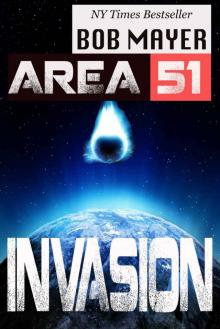 Invasion
Invasion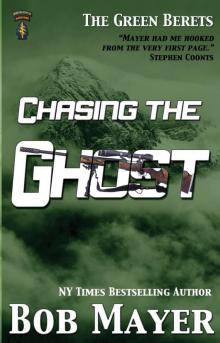 Chasing the Ghost
Chasing the Ghost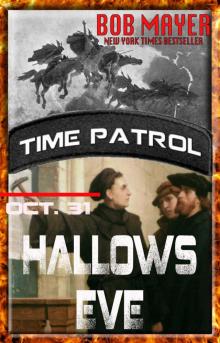 Hallows Eve
Hallows Eve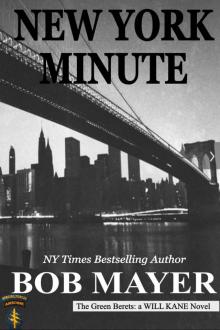 New York Minute
New York Minute Valentines Day
Valentines Day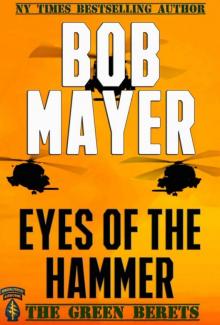 Eyes of the Hammer
Eyes of the Hammer Walk on the Wild Side
Walk on the Wild Side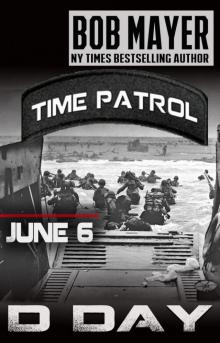 D-Day
D-Day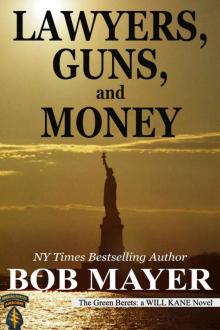 Lawyers, Guns and Money
Lawyers, Guns and Money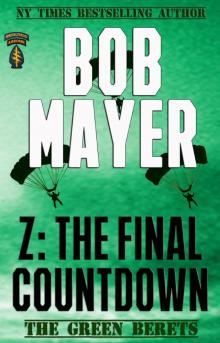 Z: The Final Countdown
Z: The Final Countdown Redemption: Area 51, #10
Redemption: Area 51, #10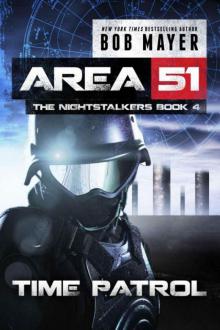 Time Patrol
Time Patrol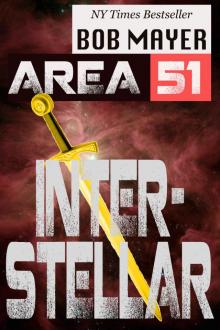 Interstellar
Interstellar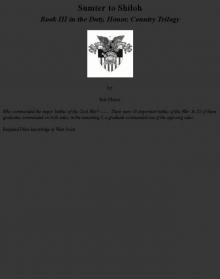 Sumter to Shiloh
Sumter to Shiloh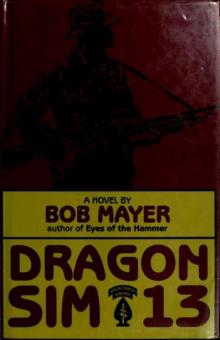 Dragon Sim-13
Dragon Sim-13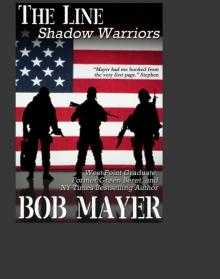 The Line
The Line Omega Missile (Shadow Warriors)
Omega Missile (Shadow Warriors)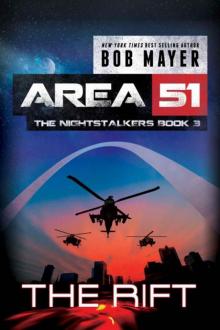 The Rift
The Rift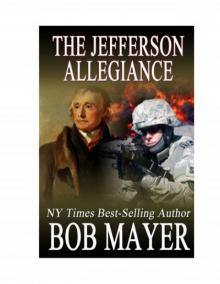 The Jefferson Allegiance
The Jefferson Allegiance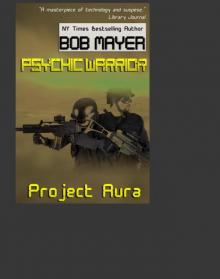 Project Aura
Project Aura Synbat
Synbat Ides of March (Time Patrol)
Ides of March (Time Patrol)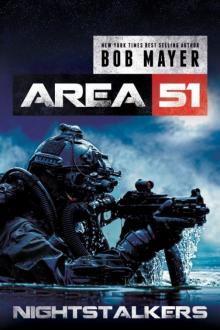 Nightstalkers a5-10
Nightstalkers a5-10 Lost Girls tc-2
Lost Girls tc-2 West Point to Mexico
West Point to Mexico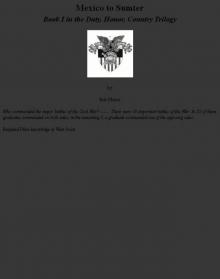 Mexico to Sumter
Mexico to Sumter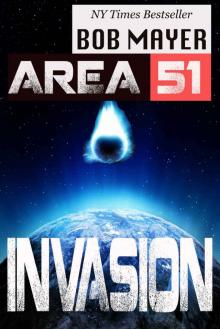 Area 51_Invasion
Area 51_Invasion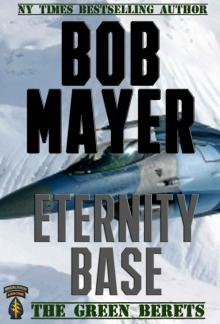 Eternity Base
Eternity Base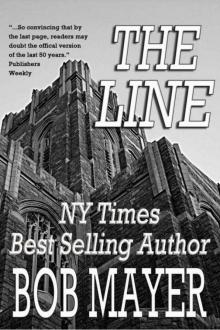 The Line bo-2
The Line bo-2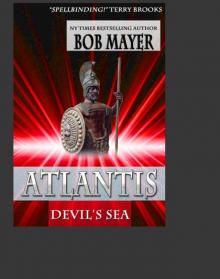 Atlantis Gate
Atlantis Gate I, Judas
I, Judas Area 51_Redemption
Area 51_Redemption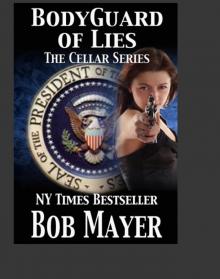 Bodyguard of Lies
Bodyguard of Lies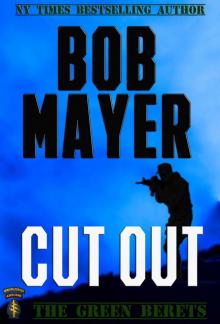 Cut Out
Cut Out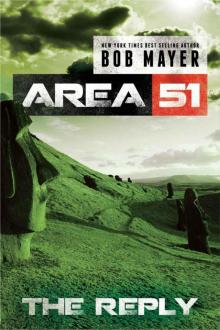 The Reply (Area 51 Series Book 2)
The Reply (Area 51 Series Book 2)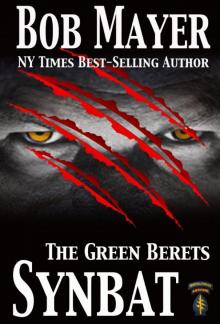 Synbat tgb-3
Synbat tgb-3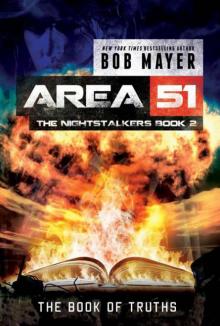 The Book of Truths a5tn-2
The Book of Truths a5tn-2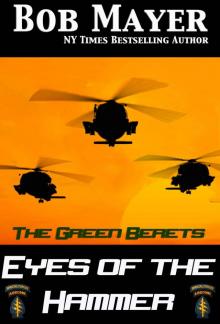 Eyes of the Hammer (The Green Beret Series)
Eyes of the Hammer (The Green Beret Series)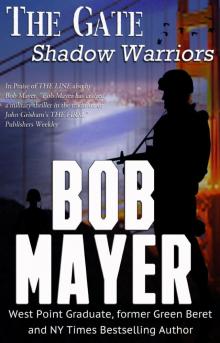 The Gate
The Gate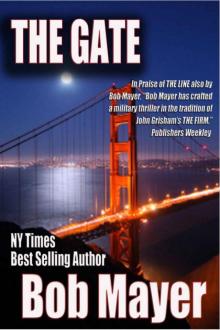 The Gate bo-1
The Gate bo-1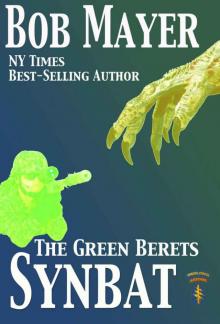 Synbat v5
Synbat v5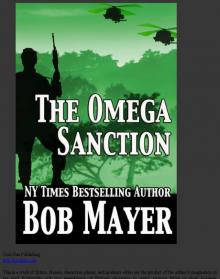 Omega Sanction
Omega Sanction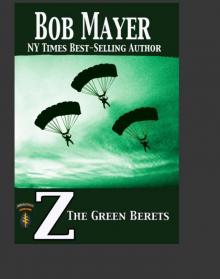 Z
Z Chasing the Son
Chasing the Son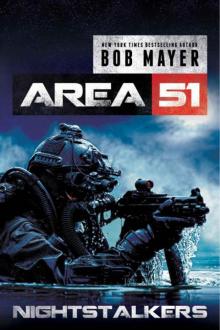 Nightstalkers
Nightstalkers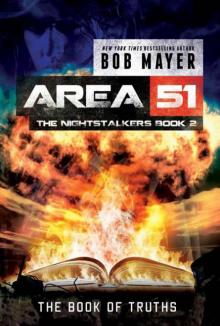 The Book of Truths
The Book of Truths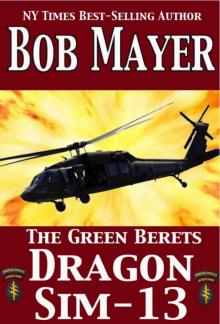 Dragon Sim-13 tgb-2
Dragon Sim-13 tgb-2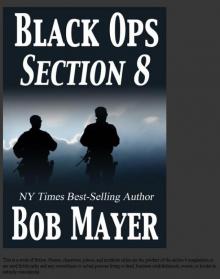 Section 8
Section 8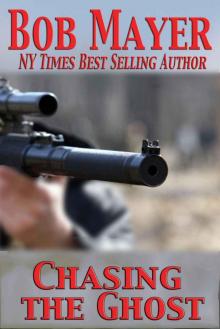 Chasing the Ghost v5
Chasing the Ghost v5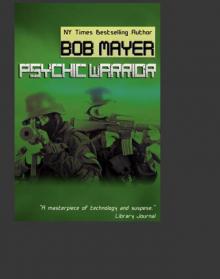 Psychic Warrior
Psychic Warrior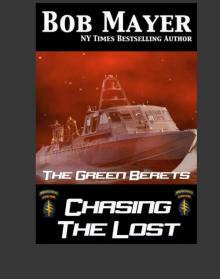 Chasing the Lost
Chasing the Lost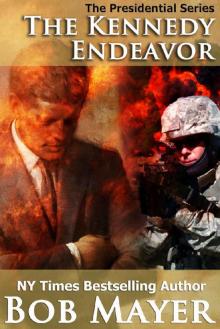 The Kennedy Endeavor (Presidential Series Book 2)
The Kennedy Endeavor (Presidential Series Book 2)